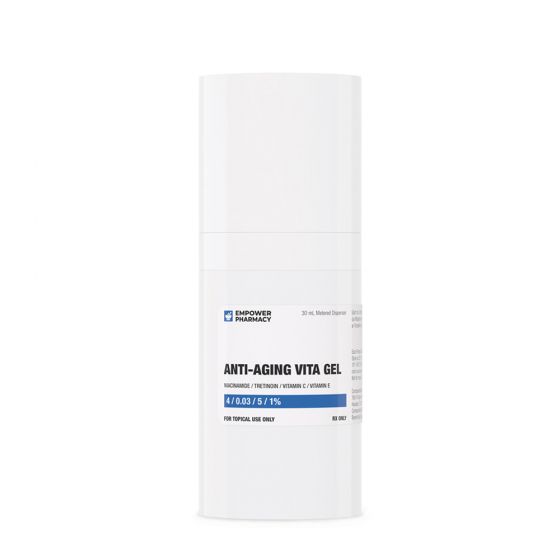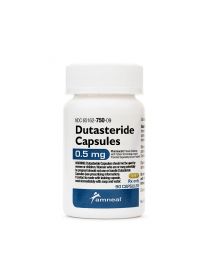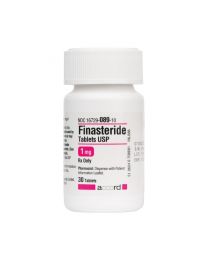- Home
- About
-
- < Products
-
- < By Brand
- Alastin Skincare
- AMP medical
- Biopelle
- CALECIM®
- CareFirst Specialty Pharmacy
- CLn Skin Care
- CO2Lift
- EltaMD
- Empower Pharmacy
- Glowbiotics
- Hillcrest Pharmacy
- HydroPeptide
- ISDIN
- Jan Marini
- Latisse
- MMSkincare
- Neocutis
- Nutrafol
- Obagi
- PCA Skin
- PHOTOZYME
- Qyksonic
- Revision Skincare
- Sente
- skinbetter science
- SkinCeuticals
- SkinMedica
- Upneeq
- VANIQA®
- Virtue Labs
-
- < By Product Type
- Acne Scarring
- Acne Treatments
- Anti-Aging
- Bath and Body
- Brightening
- Cleansers
- Eye Treatments
- Exfoliants
- Hair Care
- Hair Regrowth
- Hand Treatments
- Injectable
- Kits
- Lip Treatments
- Masks
- Moisturizers
- Neck Treatments
- Redness & Rosacea
- Retinoids & Exfoliants
- Scarring & Post-Procedure
- Thin Lashes
- Serums
- Skin Rejuvenation & Antioxidants
- Dietary Supplements
- Toners
- Sun Protection
- Contact Us
- Sign In
- Sign Up
Tretinoin
Retinoids are intracrine and paracrine mediators of cell differentiation and proliferation, apoptosis (programmed cell death), and reproduction.
Niacinamide
Dietary requirements for niacin can be met by the ingestion of either nicotinic acid or nicotinamide; as vitamins, both have identical biochemical functions.
Vitamin C
Simple diffusion and active transport are the two mechanisms used in the energy-dependent process of absorption.
$90.20
Niacinamide
Niacin (nicotinic acid or 3-pyridinecarboxylic acid) is a B-complex vitamin. Good dietary sources of niacin are animal proteins, beans, green vegetables, liver, mushrooms, peanuts, whole wheat, and unpolished rice. Niacin is also present in cereal grains but is largely bound to plant proteins, and thus is poorly absorbed after ingestion. Niacin is one of the substances used in the enrichment of refined flour, and our dietary intake of pre-formed niacin comes primarily from enriched grains. However, the body's niacin requirement is also met by the biosynthesis of niacin from tryptophan, an amino acid. For example, milk and eggs do not contain niacin, but do contain large amounts of tryptophan from which niacin is derived. Each 60 mg of excess tryptophan (after protein synthesis) is converted to approximately 1 mg of niacin. Synthesis of the vitamin from tryptophan in proteins supplies roughly half the niacin requirement in man. Iron deficiency or inadequate pyridoxine or riboflavin status will decrease the conversion of tryptophan to niacin and may contribute to deficiency, due to interdependence of coenzymes in the niacin production pathway. A late and serious manifestation of niacin deficiency is pellagra, a clinical symptom complex principally affecting the GI tract, skin, and CNS, producing symptoms of diarrhea, dermatitis, and dementia, respectively. Pellagra may result from niacin- and protein-deficient diet, isoniazid therapy, or certain diseases that result in poor utilization of tryptophan. Pellagra was the only vitamin-deficiency disease to ever reach epidemic proportions in the US; pellagra is rare today in industrialized countries due to the enrichment of refined flours.
Several synonyms for niacin and niacinamide exist. Synthetic niacin could be produced by the oxidation of nicotine, and the term 'nicotinic acid' evolved. Scientists also coined the terms 'nicotinamide' and 'niacinamide' for the amide form of nicotinic acid. The term 'niacin' has been used generically since the 1940s to label foods and to avoid the association of the vitamins with the nicotine alkaloid from tobacco. Thus the name 'niacin' has been used to denote both chemical forms, which are equivalent to vitamins on a weight basis. Both nicotinic acid and nicotinamide are synthesized for inclusion in nutritional supplements. However, since nicotinic acid and nicotinamide have different pharmacologic properties outside of their use as vitamins, it is important to distinguish between the two forms in pharmaceutical products.
In clinical medicine, nicotinic acid is used as an antilipemic, but nicotinamide (niacinamide) is not effective for this purpose. Nicotinic acid was the first hypolipidemic agent shown to decrease the incidence of secondary myocardial infarction (MI) and reduce total mortality in MI patients. However, no incremental benefit of coadministration of extended-release niacin with lovastatin or simvastatin on cardiovascular morbidity and mortality over and above that demonstrated for extended-release niacin, simvastatin, or lovastatin monotherapy has been established. In addition, the AIM-HIGH trial demonstrated that the concurrent use of extended-release niacin (1500—2000 mg/day PO) and simvastatin does not result in a greater reduction in the incidence of cardiovascular events than simvastatin alone. These results are consistent with those of the larger HPS2-THRIVE trial in which the addition of extended-release niacin to effective statin-based therapy did not result in a greater reduction in the incidence of cardiovascular events. Furthermore, there was an increased risk of serious adverse events including an increased incidence of disturbances in diabetes control and diabetes diagnoses, as well as serious gastrointestinal, musculoskeletal, dermatological, infectious, and bleeding adverse events. There was also a statistically insignificant 9% proportional increase in the incidence of death from any cause in the niacin group. The ARBITER 6-HALTS trial demonstrated that the addition of extended-release niacin 2000 mg/day to statins results in significant regression in atherosclerosis as measured by carotid intima-media thickness, and is superior to the combination of ezetimibe and a statin. In an MRI study, the addition of extended-release niacin 2000 mg/day to statin therapy resulted in a significant reduction in carotid wall area compared to placebo. However, the NIA Plaque study, which was presented at the American Heart Association (AHA) 2009 Scientific Sessions, did not find a significant reduction in the progression of atherosclerosis associated with the addition of niacin to statin therapy as compared to statin monotherapy. Additionally, nicotinic acid has been used as a therapy for tinnitus, but efficacy data are scant. Some sustained-release nicotinic acid formulations have a lower incidence of flushing but a higher incidence of hepatotoxicity when compared to immediate-release forms. Some dosage forms are available without a prescription. The FDA officially approved niacin in 1938.
Tretinoin
Tretinoin, also known as all-trans-retinoic acid (ATRA), is a naturally occurring derivative of vitamin A. As vitamin A (retinol) derivatives, retinoids are important regulators of cell reproduction, and cell proliferation and differentiation; however, unlike vitamin A, retinoids are not converted into rhodopsin, which is needed for night vision. Topical tretinoin is indicated in the treatment of mild to moderate acne (e.g., grades I-III) and photodamaged skin. Topical tretinoin has also been used in the symptomatic management of keratinization disorders such as ichthyosis and keratosis follicularis. Tretinoin represents a new class of anticancer drugs, differentiating agents. Oral tretinoin is used in the treatment of acute promyelocytic leukemia (APL) and is undergoing phase III investigation in the treatment of Kaposi's sarcoma. In the treatment of APL, tretinoin offers a less toxic means to induce complete remission than conventional chemotherapy; however, approximately 25% of patients who receive tretinoin for the treatment of APL have experienced acute promyelocytic leukemia differentiation syndrome.
Vitamin C
Vitamin C is a water-soluble vitamin, antioxidant, and crucial co-factor for the metabolism of carnitine and catecholamines, the production of collagen, and the absorption of dietary iron. Because vitamin C cannot be produced by humans, it must only be consumed from fruits and vegetables. Excellent sources of vitamin C include citrus fruits, berries, tomatoes, potatoes, and green leafy vegetables. Although the majority of vitamin C is entirely absorbed in the small intestine, as intraluminal concentrations rise, the percentage of absorbed vitamin C falls. Vitamin C is required for the hydroxylation of proline residues on procollagen, which results in the synthesis of mature collagen's triple helix. Skin, mucous membranes, blood vessels, and bone integrity are all jeopardized by the absence of a stable triple-helical framework. Scurvy occurs from a vitamin C deficiency as a result. The outcome is scurvy, which manifests as bleeding, hyperkeratosis, and hematological abnormalities. Scurvy is caused by a vitamin C shortage. In order for providers to direct patient therapy in the context of treatment or supplementation when it is indicated as a member of the interprofessional team, this activity describes the indications, mechanism of action, methods of administration, significant adverse effects, contraindications, and monitoring of vitamin C.
Vitamin E Acetate
Vitamin E is a fat-soluble vitamin found in many foods including vegetable oils, wheat germ, cereal grains, fruits, green vegetables, meat, eggs, and certain types of fish. The term 'vitamin E' actually represents a group of different tocopherols, lipid-soluble compounds that are synthesized by plants and required by most animals, including humans. Of these, d-alpha-tocopherol is the naturally occurring form with the greatest vitamin activity. The synthetic form is dl-alpha-tocopherol. Commercial vitamin E preparations are formulated primarily from synthetic dl-alpha-tocopheryl acetate. This acetate ester confers stability to the compound but is less active than the natural form. Vitamin E deficiency is rare given the amounts found in normal dietary foods. Supplementation may be required in patients who suffer from malabsorptive disorders such as fat malabsorption syndrome, cystic fibrosis, chronic bowel disease (e.g., Crohn's, Celiac, and Whipple's disease), or who have undergone certain gastrointestinal surgeries (e.g., gastrectomy or gastric bypass). In children, the use of vitamin E is primarily in the form of supplementation to maintain adequate intakes to prevent deficiency.8 Pure vitamin E was first isolated from wheat germ oil in 1936, and its chemical structure was defined and synthesis was achieved in 1938. The first time vitamin E was recognized by the Food and Nutrition Board of the National Research Council was in 1968. Systemic vitamin E was approved by the FDA in 1941. In addition to oral vitamin E formulations used for supplementation, several topical formulations of vitamin E are also available. Topical vitamin E formulations have been used off-label with claims of protective antioxidant effects against photoaging. The FDA has not evaluated these claims, and the ability of topical Vitamin E products to aid in the healing of minor burns and sunburns has not been substantiated.
Although early evidence had suggested the potential for vitamin E to reduce cardiovascular disease (CVD),910111213 more recent outcome studies have not shown benefits for vitamin E. The HOPE study has shown no effect of vitamin E on cardiac outcomes in high-risk patients with diabetes or vascular disease. The Women's Health Study (WHS), a study of approximately 40 thousand women receiving a daily dose of 400 mg (600 International Units), has shown no overall benefit for major cardiovascular events. The American Heart Association guidelines do not recommend vitamin E therapy for women as a preventative measure for CVD. As for males, results of the SU.VI.MAX study, which included a total of 13,017 subjects (including 5,141 men aged 45 to 60 years) followed for 7.5 years, has reported that supplementation with a multivitamin (containing 30 mg of vitamin E) did not reduce the incidence of ischemic CVD incidence in men.
The results of studies addressing the off-label use of vitamin E in cancer have been inconsistent and inconclusive. Results of the HOPE-TOO trial showed that vitamin E supplementation does not prevent cancer, including prostate cancer. High-risk patients (e.g., diabetes, vascular disease) enrolled in this trial were administered a dose of 268 mg (400 International Units) daily and were followed for a median of 7 years. A post-interventional follow-up of the ATBC Study reported that the initial beneficial effects of alpha-tocopherol disappeared during post-interventional follow-up. Some studies have reported the potential benefits of vitamin E supplementation for prostate cancer. A cohort study suggested an inverse association between supplemental vitamin E use and the risk of metastatic or fatal prostate cancer among current smokers or smokers who stopped smoking. In the SU.VI.MAX study, vitamin E (30 mg) provided protection in men but not women, resulting in a significant reduction in total cancer incidence.17 In this trial, researchers concluded that supplementation may be effective in men due to lower baseline levels of antioxidants. A prior controlled clinical trial reported a 32% decrease in the incidence of prostate cancer among subjects receiving alpha-tocopherol compared to those not receiving alpha-tocopherol. The reduction was seen for clinical prostate cancer, but not for latent cancer. In this study, alpha-tocopherol and beta-carotene supplementation were given either separately or together, to 29,133 prostate cancer patients who were smokers for 5-8 years. In contrast, in the Selenium and Vitamin E Cancer Prevention Trial (SELECT), which was a long-term, multi-center, placebo-controlled trial, more than 35,000 men 50 years of age and older were randomized to receive either selenium 200 mcg and vitamin E 400 mg, selenium and placebo, vitamin E and placebo, or placebo. The trial was stopped after about 7 years when interim results found that neither drug prevented prostate cancer. Further, 2 preliminary trends of vitamin E slightly increasing the risk of prostate cancer and selenium slightly increasing the risk of diabetes were found. Follow-up data collection is ongoing.
| Brand | Empower Pharmacy |
|---|
Write Your Own Review
a mixture of scientifically backed, effective ingredients that may help to mitigate the effects of age on skin for a more youthful complexion.
Niacinamide / Tretinoin / Vitamin C / Vitamin E 4/0.03/5/1%












